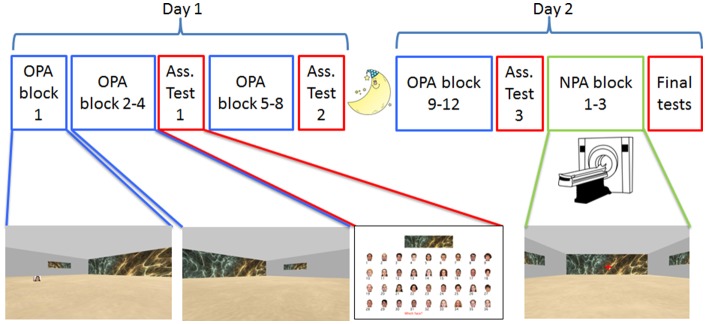Figure 1.
Experimental design. Participants were tested on two consecutive days, approximately 24 h apart. The paradigm was a 2D navigational paradigm in which participants were instructed to learn face-cue locations (Old Paired Associates, OPA; in blue) in 36 rooms with differential wallpapers. On Day 1 and the beginning of Day 2, participants learned OPA-locations on a laptop computer. During OPA block 1 they saw the OPA-location and just had to move to it, but for OPA blocks 2–12 they had to search for the hidden OPA-location. After OPA blocks 4, 8 and 12, participants received an associative memory task in which they were asked to pair the right face with the correct environmental/room wallpaper (in red). After finishing OPA training, participants underwent fMRI while they learned a new (New Paired Associates, NPA; in green) location for each room, this time without a face.

